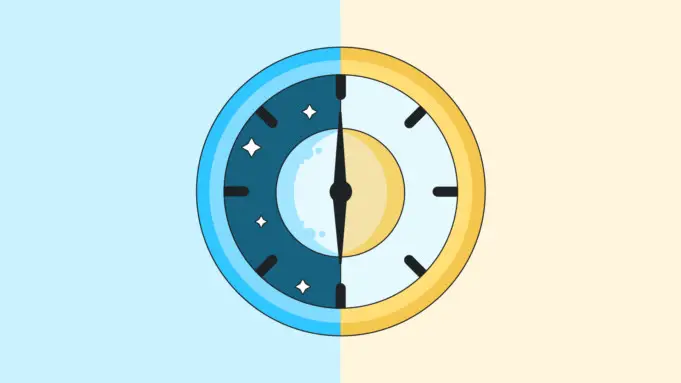Sleeping sometimes is not as easy as it seems. While you may simply close your eyes and drift to la-la land, for many, sleep is almost impossible to achieve.
It is a privilege permitted to children and those who do not have any responsibilities. Caring for the family, gym, work, hanging out with friends – these are some of the causes of little or no sleep.
There is also the pervasive idea that spending less time sleeping and more hours invested in your career is necessary for career growth.
What is the Circadian Rhythm?
The circadian rhythm is a natural, biological process by which the sleep-wake cycle is regulated. It is an internal process that repeats itself approximately every 24 hours.
This process has been observed in plants, animals, cyanobacteria, and fungi. Circadian rhythms are endogenously regulated, although they could be affected by external factors like sunlight and temperature.
Circadian rhythm plays an essential role in photoperiodism – that is, the physiological reaction of organisms to night and day; it helps to measure and interpret day length.
Types of Sleep Disorders
Sleep disorders are numerous, and they are often group in categories to better explain their why and how they affect you. Below are some common types of sleep disorders.
Insomnia
This is one of the most common types of sleep disorders. Insomnia occurs when someone has difficulty sleeping or staying asleep, even with the chance to do so.
People who have insomnia are often not satisfied with their sleep and wake up feeling unrefreshed and tired.
According to the American Psychiatric Association, one-third of all adults report insomnia symptoms. However, only 6-10 percent of all adults have symptoms severe enough for them to be diagnosed with insomnia disorder.
There are different types of insomnia, and each is classified according to the length of its duration.
Acute insomnia is brief and is often attributed to traumatic life events such as stress, traumatic life events like receiving bad news, or when you simply can’t sleep because of a big event the following day. Many people experience this type of insomnia, and it usually resolves itself with time.
Chronic insomnia, however, is persistent and occurs for a while. It is the disruption of sleep occurring at least three nights in a week for at least three months. There are many causes of chronic insomnia, and these could include:
- Medication that disrupts the sleep cycle
- Substance abuse
- Depression and anxiety
- Change in environment
- Medical conditions like arthritis and chronic back pain
Chronic insomnia is often linked to other medical conditions, which makes it difficult to understand sometimes.
People with insomnia may experience the following symptoms:
- Fatigue
- Difficulty concentrating
- Mood swings
- Low energy and decreased performance at school or work
Treatment of insomnia would behavioral and psychological therapy along with medication.
Sleep Apnea
Sleep apnea is a condition caused by a partial or complete blockage of the throat, which leads makes breathing stop involuntarily for short periods while asleep. Usually, air flows into the lungs from the mouth and nose all the time.
The short periods when breathing stops is known as an apneic episode. With sleep apnea, these episodes occur all through the night. Snoring is a common denominator of this condition.
Sleep apnea is more likely to occur in older people and people that are obese. Also, sleeping on your back aggravates your sleep apnea.
Symptoms of this disorder include:
- Daytime sleeping
- Drowsiness
- Forgetfulness
- Headaches
- Hyperactivity in children
- Depression
- Poor performance at school or work
- Low sex drive
- Swollen legs (edema)
If left untreated, this disorder can lead to serious health problems such as hypertension, diabetes, stroke, or heart disease.
Restless Leg Syndrome
Restless leg syndrome, also known as Willis-Ekbom disease, is a neurological disorder that causes an unpleasant sensation in the legs with an accompanying urge to move them. The condition is more intense when relaxing or trying to fall asleep.
RLS is a major concern for most people because it interferes with sleep and causes exhaustion and sleeping during the day. Being deprived of sleep may put on at risk of developing other health problems such as depression.
Many people with RLS usually have a comorbid condition known as Periodic Limb Movement of Sleep (PLMS), which causes the legs to jerk or twitch frequently while asleep. RLS is a condition that occurs for life with no known cause, although the genetic and environmental factors may trigger it.
Symptoms of restless leg syndrome include:
- A compelling urge to move your legs while sitting or lying
- Tingling or crawling sensations in the legs
- Difficulty sleeping
Sleepwalking
Sleepwalking, also known as somnambulism, is a condition where a person moves or walks around while sleeping as if they are awake. The sleepwalker may perform several activities like eating, going to the bathroom, or getting dressed. It is a prevalent condition in children.
Sleepwalking may be a sign of an underlying medical condition like sleep apnea, migraine, or restless leg syndrome. It can also have a genetic cause. You are more likely to sleepwalk if there is a family history of sleepwalking as well.
Certain medications are likely to cause sleepwalking, although this is very rare. These medications include Ambien and Edluar, both sleep medications.
Symptoms of this condition vary from one person to another. They include:
- Glazed or glassy eyes
- Sitting up in bed
- Walking around the home and performing daily activities
Available treatment options for sleepwalking include medication and hypnosis.
Narcolepsy
This is a rare, lifelong disorder of the nervous system which causes abnormal sleep and affects a person’s quality of life.
The symptoms of this condition usually show between the ages of 10 and 25 years, although it isn’t usually recognized immediately.
Symptoms of narcolepsy include:
- Cataplexy (sudden, temporary loss of muscle tone
- Daytime sleeping
- Hallucinations while falling asleep
- Sleep paralysis
There are no known causes of narcolepsy. However, many people living with narcolepsy have a reduced amount of hypocretin, a brain protein responsible for regulating sleep-wake cycles.
Night Terrors
Night terrors are a type of sleep disorder that causes a person to partially wake from sleep in a state of terror. A person who experiences night terrors has their fight-or-flight system activated. This disorder usually occurs in the deepest stage of sleep.
Night terrors differ from nightmares. While the person may be partially asleep during a night terror, nightmares are dreams that occur while they are completely asleep.
During a night terror, the sufferer is unaware of their surroundings and remains inconsolable. They have no memory of the episode once awake.
Night terrors occur mostly in children under 12. They typically outgrow this condition as they age. It is a rare condition in adults and occurs as a result of anxiety or substance abuse.
Possible causes of night terrors in adults include stress, head injuries, migraines fever, post-traumatic stress disorder (PTSD), bipolar disorder, and depression.












